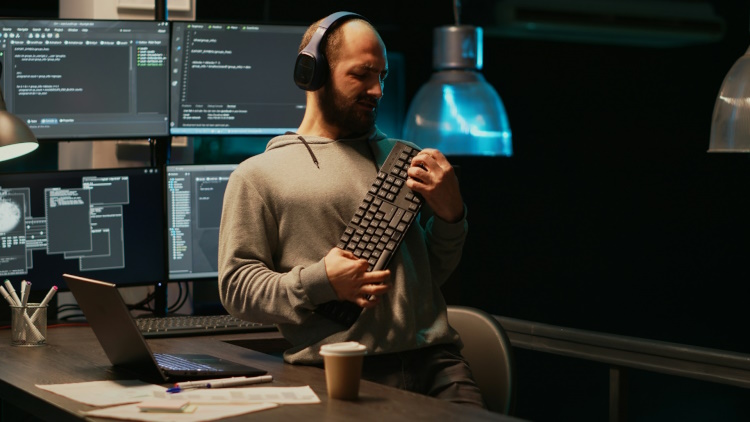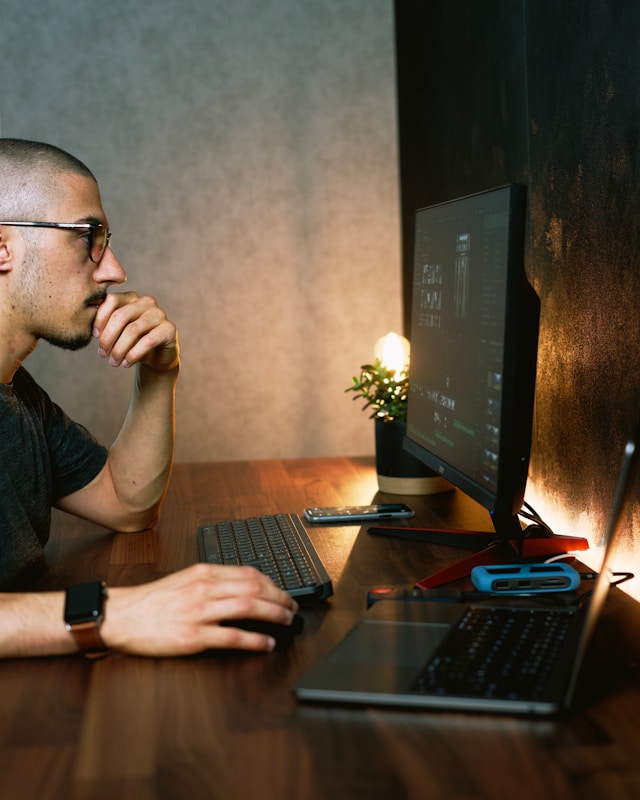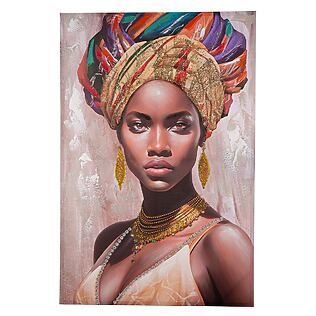In a digitized world we experience a rapid fusion of art, technology and society. Artificial intelligence (AI) is no longer a promise of the future, but a reality that revolutionizes creative processes as well as the cyber security . Whether in image processing, in graphic design, in the music composition or even in creative writing - AI is increasingly used as a tool to advance innovations. However, these progress also creates new challenges, especially in the area of digital security .
For artists, designers and creative free spirits, the use of digital tools not only means more opportunities, but also more responsibility in dealing with their data, ideas and digital identities.
The role of artificial intelligence in creative work

Image source: Getty Images @Gettyimages, via unsplash
AI is used in many creative fields today: AI-based programs generate works of art, compose music, write texts and analyze large amounts of data for design processes. This enables faster, more experimental and often more efficient way of working.
An example are AI-controlled algorithms that support color analysis or spatial planning in interior design. In photography, intelligent filters and automatic image corrections help to achieve optimal results with minimal effort.
But where AI supports creative work processes, questions also arise:
Who owns creative performance - man or machine? And how can these digital works be protected from misuse or theft? "
AI delivers new challenges for cybersecurity? But AI also helps with security
In a lecture by the Austrian Chamber of Commerce, it was recently shown what effects AI has on cybersecurity, what will expect us in the future and how to prepare for it:
At the Cybersecurity Summit 2025, efforts were made intensively to separate myth from reality in the heated debate. Manuel Reinsperger , researcher for the use of AI systems in offensive cyber security, pentester and cybersecurity consultant, provides clarity and reports the current state of science. He provides answers to questions such as
- How do such AI attacks look,
- Why is it no longer just about phishing,
- And what concretely affects me as a creative self -employed?
In the razor-sharp analysis, we learn about the latest findings from leading edge research and learn from experiences from entrepreneurial practice, what risks the creative industry awaits in the coming years.
On the other hand, the comet -like rise of artificial intelligence does not only result in new threats. The defensive and protection can also be strengthened.
Digital security: an underestimated risk of creative
Many creative work today-at home, at home, in co-working space , in the café or on trips. The digital workplace becomes a mobile studio. Personal devices such as smartphones, tablets and laptops are often used, which are not always sufficiently protected.

Photo by Guillaume Issaly @GuillaumeiSaly29, via Unsplash
Governments, private individuals, companies, banks - and even large, country -tensioning institutions such as NATO - are becoming increasingly victims of cyber attacks. Cybercrime causes globally three times as much economic damage as natural disasters. The attackers are often individual people or small groups. How much does they have and what damage they can do, says the art documentary "The Invisible War" .
The documentation accompanies Fabian Osmond from the French security company Cybi , who has developed software with his colleagues, which specializes in finding digital loopholes. It should find the weaknesses within ten minutes.
The protection of digital content is also of central importance in the creative environment - in which often sensitive data, unpublished projects or customer information are stored. Cyber crime, data loss or unwanted access by third parties are real threats.
In addition, many creative cloud services, social media platforms or messenger services use to communicate with clients and colleagues. Here security gaps can arise if no suitable protective measures are taken.
Between freedom and control: digital surveillance in everyday creative life
In the context of cyber security, the focus is on surveillance It is not just about state control or large -scale cyber attacks - it can also make sense in private or professional environment to reflect or check digital use.
A growing interest is shown. B. on tools with which a cell phone can be monitored free of charge . Such applications make it possible to understand the activities on a mobile device - for example to ensure the safety of a family member, to protect work equipment or to better understand your own data use.
For creative people, this can mean that you use your mobile tools more consciously, recognize suspicious activities at an early stage or keep an overview of which apps have access to which data. In creative teams or agencies, this can also be helpful as part of IT security, for example by introducing clear Privacy guidelines and monitoring solutions on the company's own devices.
The balancing act between innovation and protection
The challenge is to find a balance between creative freedom and digital protection. Those who exercise too much control risk to inhibit creative processes. Those who act too carefree may endanger their projects or reputation.
Especially in connection with AI-based creativity, new ways have to be found in order to clearly assign content and to secure intellectual property. Digital watermarks, blockchain-based copyright solutions or secure platforms for the management of creative content are the first approaches that are discussed in the scene.
In addition, creative professionals should regularly update their software, use secure passwords and find out about modern security solutions-not only for their desktop systems, but also especially for mobile devices.
AI is only of benefit to the professionals? Wrongly thought, but it depends on how to use them. The Morpheus Tutorials show that we can also take initiative as a small user ourselves and actively improve our digital protection:
Artificial intelligence and ethics: an open debate
In addition to technical questions, it is also about ethical considerations. When AI begins to create art, write texts or generate pictures - how does our understanding of originality, creativity and artistic responsibility change?
Digital security also plays a role here. If AI systems access open databases, the question arises: have this data been used legally? Was there any approval of the author? And how can creative people protect themselves that their works unintentionally end up in AI training databases?
The debate about AI, copyright and digital ethics is still in its infancy - but it is essential for the future of creative work.
Creative responsibility in the digital age
Artistic work in the 21st century is inextricably linked to digital technologies. Artificial intelligence offers fascinating opportunities - but it also brings new demands on Privacy , ethical action and digital responsibility.
Creative should not only deal with new tools and trends, but also with the dangers that a digitized way of working entails. Whether simple protective measures, conscious handling of AI or the occasional use of a cell phone monitor free tools for self-control-if you actively deal with the digital world, you can not only make it safer, but also more freely.

Owner and Managing Director of Kunstplaza. Publicist, editor, and passionate blogger in the field of art, design, and creativity since 2011. Successful completion of a degree in web design as part of a university program (2008). Further development of creativity techniques through courses in free drawing, expressive painting, and theater/acting. Profound knowledge of the art market through many years of journalistic research and numerous collaborations with actors/institutions from art and culture.

















